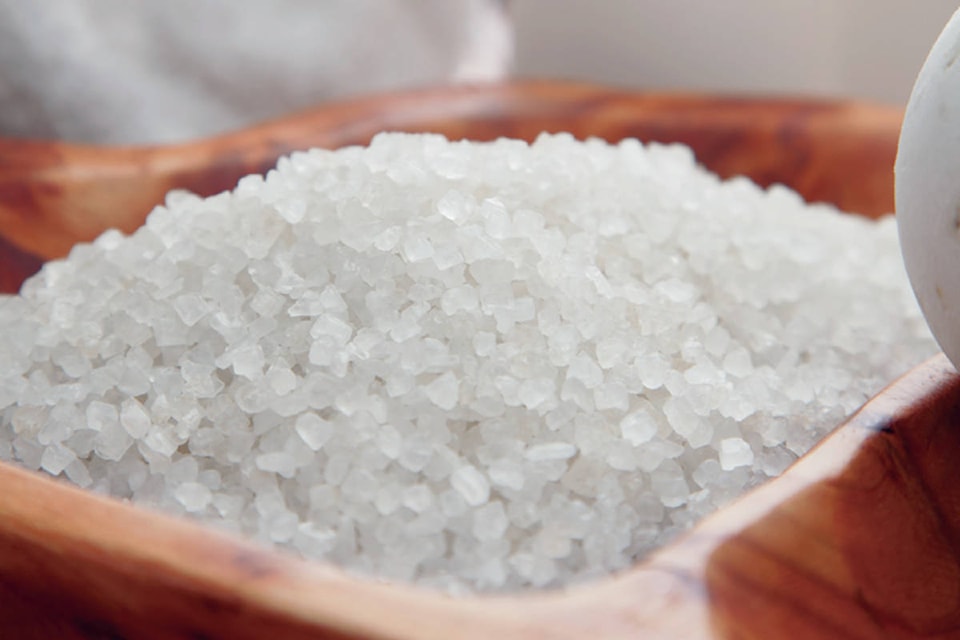In our society of overabundance our problem is not getting too little salt, but how easy it is to get too much. We do need “a little” sodium but how much is that, and what kind of salt should we be using? Salt has mainly two constituents, sodium and chloride (NaCl).
Research has shown consistently that it’s the sodium in salt that is responsible for high blood pressure and vessel and kidney damage. But, we need sodium for good health and to maintain life. Sodium is found in small amounts in all cells and tissues of our body. Sodium is responsible for regulating cellular balance in and out of our cells, nerve and muscle function, maintains stable blood pressure, electrolyte balance, conducting electricity and water concentration content.
Table salt has 3.91 ppm sodium, Maldon sea salt from England has 3.83 ppm, Himalayan salt has 3.68 ppm, and Celtic salt has 3.38 ppm. These are negligible differences when it comes to our overall health, blood pressure and kidney health. Table salt is above 99 per cent NaCl and sea salts contain from 95-99 per cent NaCl. Table salt is generally what is used in the food industry.
Table salt is mined from the ground, and then processed using strong chemicals, such as bleach, to remove minerals and impurities. These chemicals can irritate the mouth, stomach, intestines and throat. Iodine and anticaking agents are then added to prevent clumping.
Sea salts are mined from dehydrated sea water. Though advertising touts 84 trace minerals, these amounts are so tiny and minute that no research shows that those minerals offer any health benefit. The only advantage natural salt has over table salt is less processing and a better appearance and taste. All the hype about sea salts being “healthy”, even in the health food world, is due to marketing and advertising. Sea salts are healthier than table salt, yes, but not a health food in and of itself.
Health Canada recommends 1500 mg salt and not to exceed 2300 mg for those 14 years and older. One teaspoon salt equals about 2300 mg. The report, Sodium Intake of Canadians in 2017 showed that the average intake was 2760 mg, almost double of the recommendation. However, 1/4 teaspoon per day is all we need to run our body efficiently.
If a packaged food has more than 0.5 mg sodium per calorie, it’s high salt. To calculate this, look at the label, if it has 100 calories per serving, it should have no more than 50 mg sodium.
The good news is that fresh fruits and vegetables have natural sodium and will not raise your blood pressure, or hurt your vessels and kidneys. Kale and many other whole plant foods have a similar concentration of sodium as our tissues and cells. This means if we are eating a total whole foods, plant based diet we receive all the amount of sodium our body needs and no additional added salt is needed.
Cutting down your salt will make your food tasteless for the first 30-45 days, but your taste buds will eventually adapt and your blood vessels and kidneys happy. All salts are an addicting drug that releases dopamine, a feel good chemical our brains emit, so have patience with yourself and persevere. I assure you your brain and taste buds will come around. Is sea salt all that
